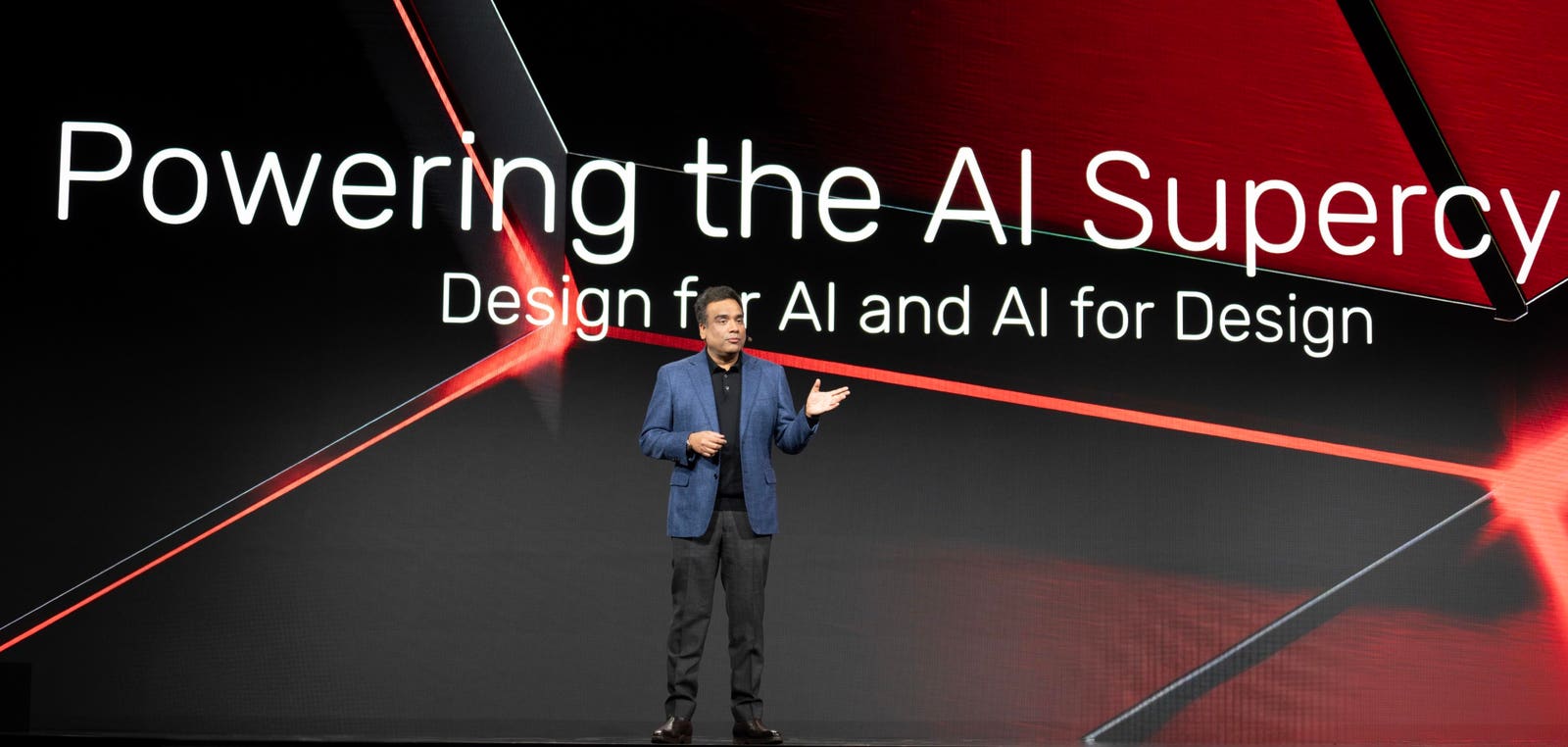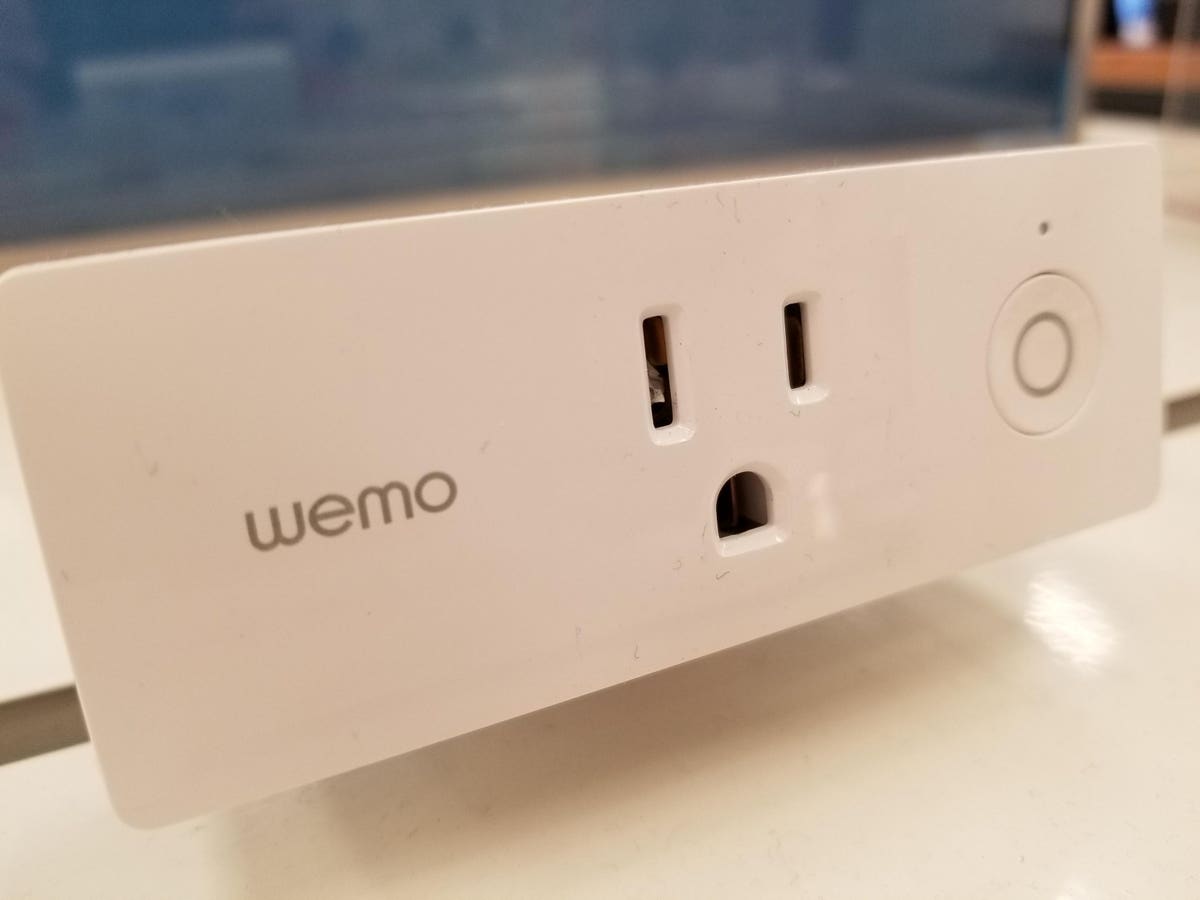Cadence CEO Anirudh Devgan delivers his Cadence Live Keynote.
After last year’s Cadence Live event, it was going to be hard to match the energy and star power of CEO guests like Nvidia’s Jensen Huang and Qualcomm’s Cristiano Amon. This year, Cadence brought back Huang, but instead of Amon, Cadence had Intel’s Lip-Bu Tan. It was a homecoming for Tan, who helped turn around Cadence as its CEO for over a decade. He is now CEO of Intel and trying to turn around that company; he also recently had Cadence on stage at the Intel Foundry Direct Connect event to talk about their partnership.
(Note: Cadence is an advisory client of my firm, Moor Insights & Strategy.)
New IP And The Millennium M2000 Supercomputer
At the event, Cadence announced a slew of new products from across the range of the company’s offerings. As Cadence and many other tech companies embrace a system-level approach to solving some of the world’s most complex design problems, we’ve seen a shift towards more integrated solutions. This is certainly true for Cadence, whether that solution is a software product, an IP design or a hardware platform. When I spoke with Cadence’s CEO Anirudh Devgan, it was clear that the company wants to expand its IP capabilities and enhance its engagement with customers on building out its portfolio.
In line with this approach, Cadence announced its new Tensilica NeuroEdge 130 AI Co-Processor, which is specifically targeted at agentic AI applications. This processor is designed to complement the NPU by allowing it to offload some simpler tasks. Cadence says the co-processor provides a 30% area savings and 20% reduction in power compared to Tensilica’s Vision DSPs. The new co-processor can work with any NPU, whether it’s based on Cadence’s Neo NPU IP or comes from a third party.
Cadence CEO Anirudh Devgan announces the Millennium 2000.
In addition to the new IP, Cadence announced the new Millennium M2000 Supercomputer with Nvidia Blackwell GPUs. This built on last year’s launch of the Millennium M1, which combined Cadence’s Enterprise Multiphysics platform with advanced computational fluid dynamics capabilities, accelerated by both CPUs and GPUs. On stage at Cadence Live, Huang talked about how excited he was for the Millennium M2000, so much so that he publicly proclaimed a purchase order for ten M2000s right then. I also learned from the Cadence and Nvidia teams that the M2000 will come in two flavors, one with HGX B200 clusters and one that uses RTX Pro 6000 Blackwell GPUs. The difference is that the RTX Pro is more of a blend of visualization and computation, while the HGX B200 is purely for computation. This means that each customer can buy the right M2000 based on its specific use case and whether visualization is key to its needs.
The impressive thing about the M2000 is that it helps to address the three core areas of Cadence’s business: silicon design, system design and drug discovery. Cadence claims that a single M2000 replaces 10,000 CPUs for silicon design, 80,000 CPUs for airframe simulations and 150,000 CPUs for molecular discovery. Cadence customer MediaTek even said that the M2000 enabled previously impossible simulations for dynamic IR, while customer Supermicro said the M2000 delivered 8x faster thermal simulations for its server designs.
The use case that really stuck with me was aerospace, specifically the idea that a single M2000 can simulate a multibillion-cell airframe in under 24 hours — something that would normally take a Top 500 supercomputer eight days. The Milennium M2000 is enabling aerospace startups like Boom Aero to take complex CFD simulations from one week down to two days. Many startups in the defense and aerospace industry cannot afford to build massive supercomputers to compete with prime contractors such as General Atomics, Northrop Grumman or Lockheed Martin. They must be agile, yet also still have access to the simulations necessary to test their ideas and iterate quickly. I believe that having access to a solution like the M2000 could give smaller American aerospace and defense companies an opportunity to compete without needing to stand up entire datacenters.
Cadence’s Approach To AI And Agents
During his keynote, Devgan spoke about AI more times than I could count. He recapped the company’s various AI platforms, which include JedAI with its various agentic AIs. But what I really liked was his visual representation of how a silicon agent might utilize creation and execution agents that in turn control other subsystem agents to deliver different levels of automation. Cadence has created an autonomous system-level ranking — much like the car industry has for autonomous driving, but instead of driving a car, it’s building a chip. He spoke about how Cadence expects that AI-driven chip design will likely reach an inflection point this year, with the majority of advanced chips being designed using AI-enabled tools. He also talked about how agentic AI will increase the number of chip designs and further shorten time-to-market.
Cadence CEO Anirudh Devgan talks about AI agents’ roles across the industry.
In addition to its broader AI approach, Cadence also announced the Cerebrus AI Studio, which is one of the agentic AIs specifically targeted at helping implement digital designs. Cerebrus AI Studio uses agentic AI to improve PPA optimization, improving power consumption by 10%, density by 1% and timing by 30%. Samsung used this to achieve a 4x improvement in productivity for one project and an 11% improvement to PPA in AI subsystems. STMicroelectronics also optimized multiple SoCs in one platform. This is an area where Cadence has had room for improvement compared to Synopsys, so I’m glad to see the company forging ahead to improve this part of its overall offerings.
Analyst Takeaways
I believe that Cadence is doing a good job of continuing to expand its capabilities and evolve into a systems solution company, attacking both bigger and smaller problems at the same time. I get really excited about the possibilities of something like the Millennium M2000 supercomputer, especially when I think about its potential applications in science, aerospace and computing.
Cadence’s levels of AI-automated chip design
That said, Cadence is also still very much an EDA tools provider, and it’s good to see the company leaning into that with more AI-enabled tools and a more complete agentic approach to chip design. To be most successful, the company must continue to balance its expansion into solving ultra-difficult scientific and engineering challenges using its supercomputers with maintaining its stronghold in EDA for chip makers. Cadence continues to be one of the most important companies in the world for enabling chip design; based on its latest announcements, that shows no signs of slowing.
Moor Insights & Strategy provides or has provided paid services to technology companies, like all tech industry research and analyst firms. These services include research, analysis, advising, consulting, benchmarking, acquisition matchmaking and video and speaking sponsorships. Of the companies mentioned in this article, Moor Insights & Strategy currently has (or has had) a paid business relationship with Cadence, Intel, MediaTek, Nvidia, Qualcomm, Samsung, STMicroelectronics and Synopsys.









